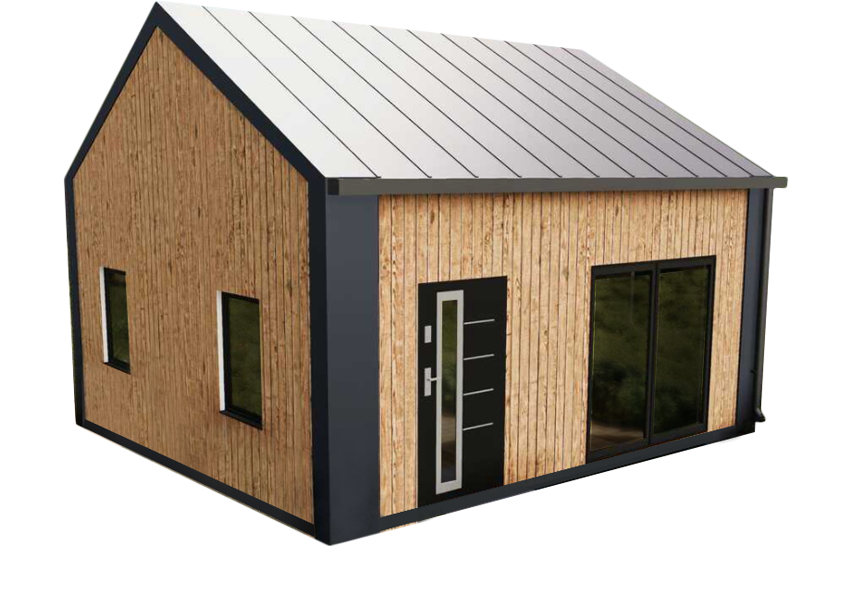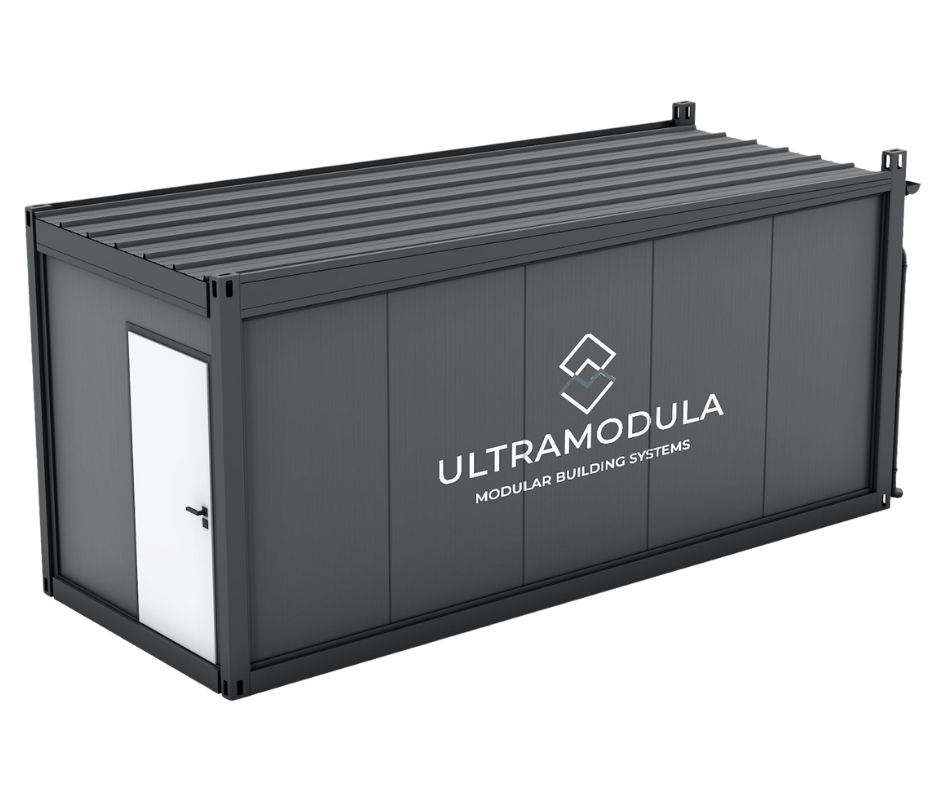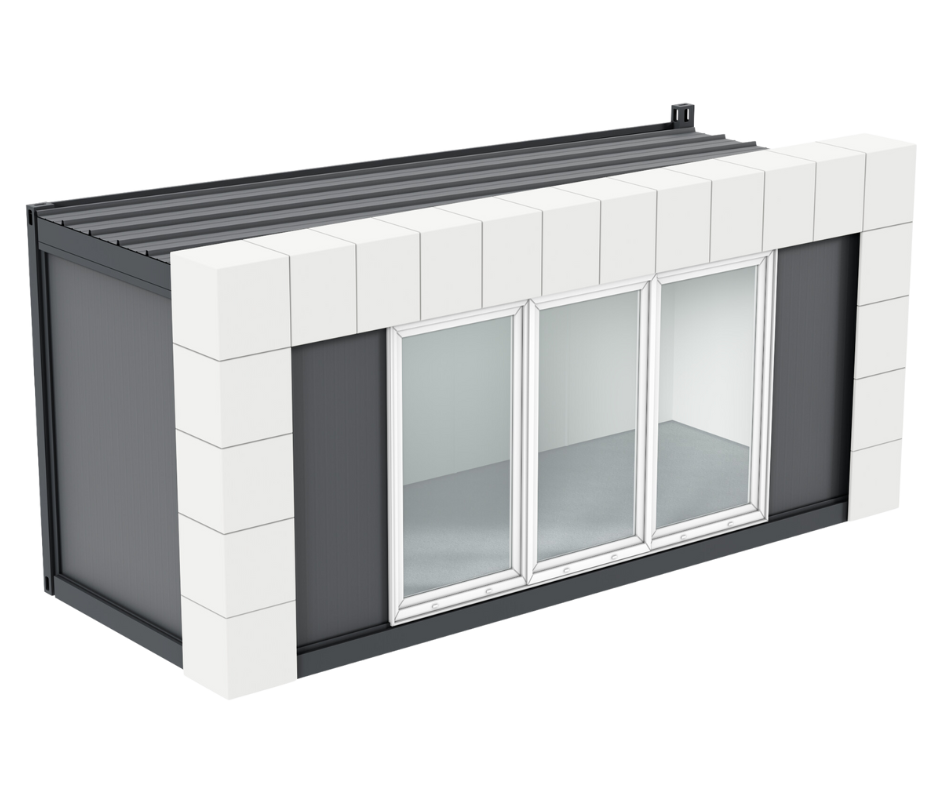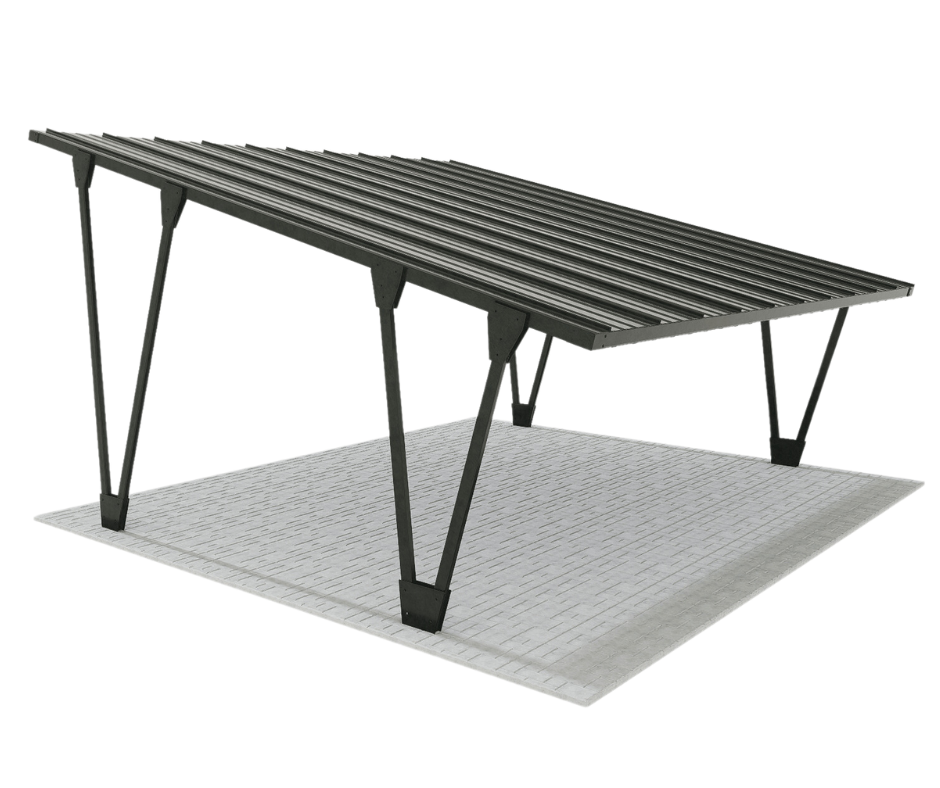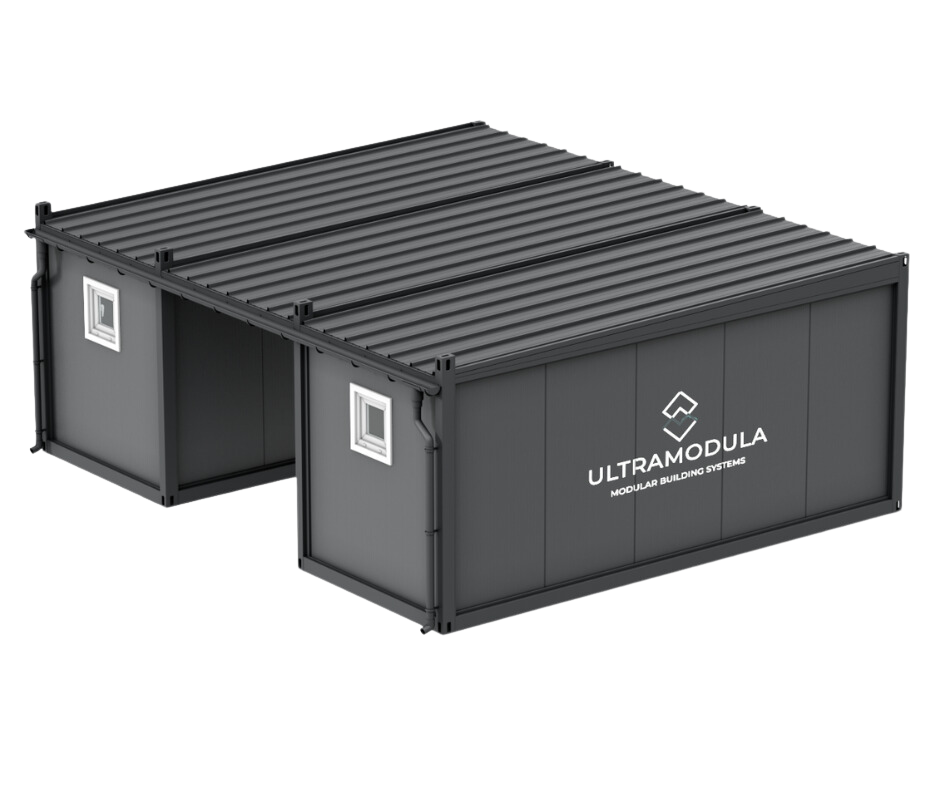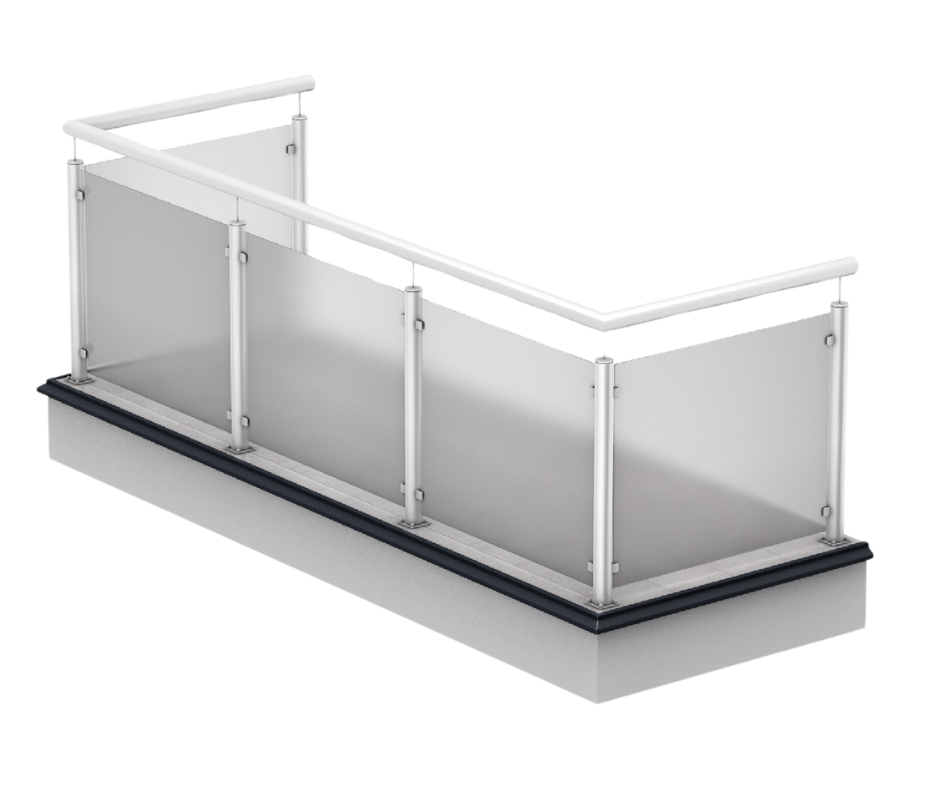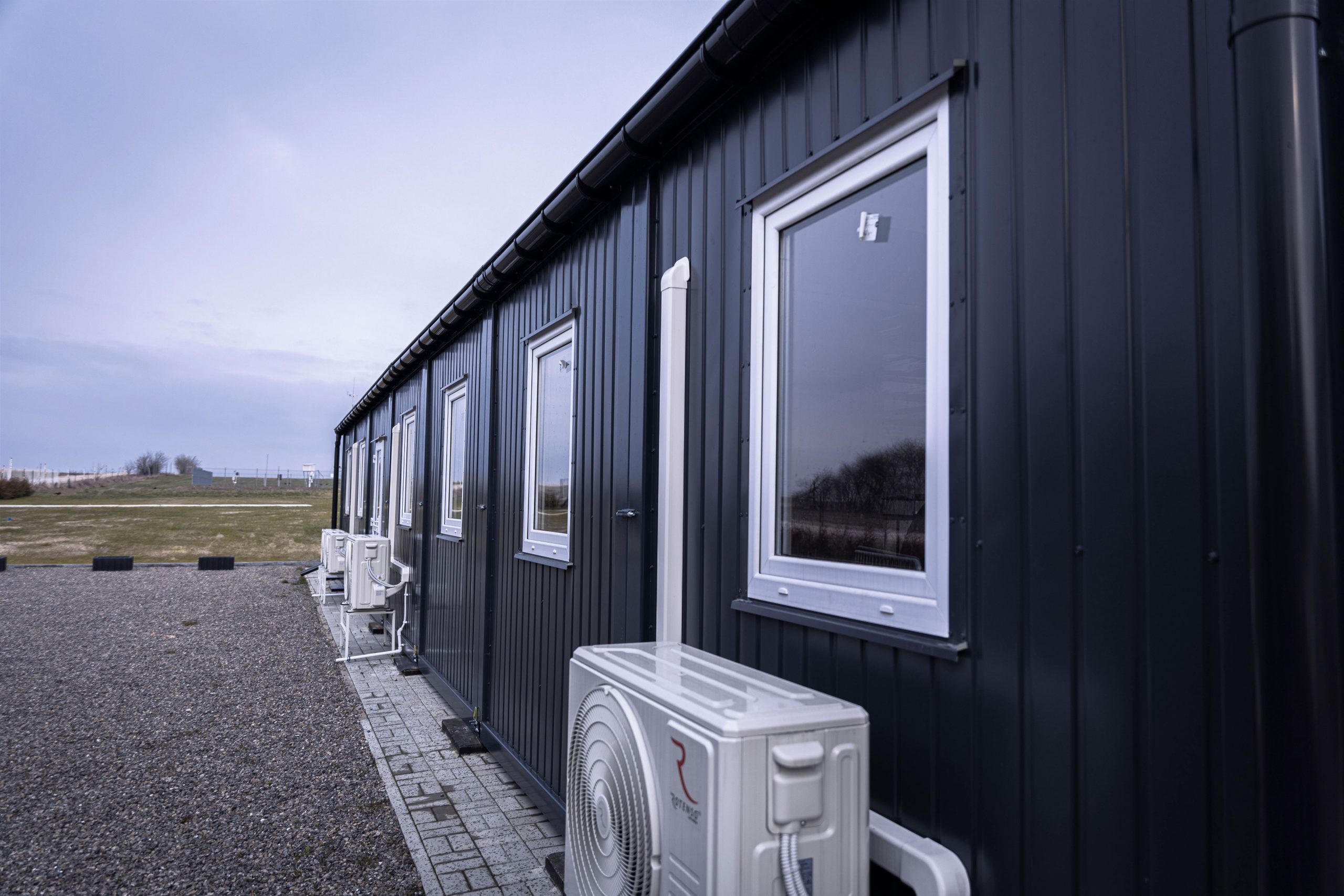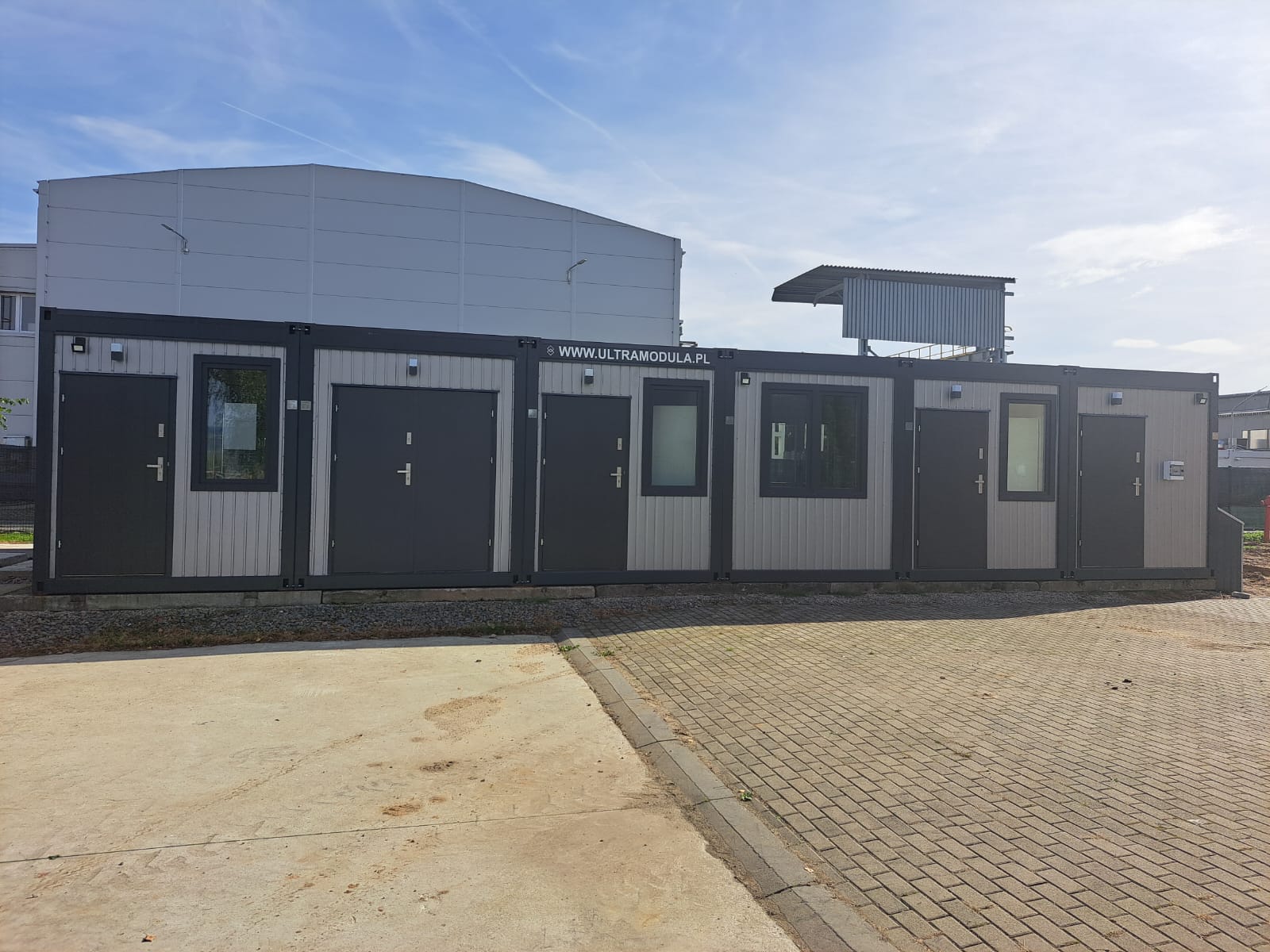
Containers sanitary and office | Ultramodule
About the fact that objects container i modular they work great in countless industries, no one needs to be convinced. Buildings designed using them are visible at every step and no longer resemble uninteresting, even repulsive "tin" buildings. These are modern, functional and ecological buildings that can be used in virtually any industry. The long-term benefits of investing in container and modular facilities are one of the key reasons for their ever-increasing popularity. Such investments are much more economical compared to traditional construction methods. Cost reduction both constructionand operation is the result of the use of standardized modules that eliminate unnecessary waste of materials and time. And as we know, the long-term benefits of any investment depend largely on the amount of initial outlays - the lower they are, the easier it is to start the project and obtain the expected return.
Simple planning and design shortens the pre-investment stage
When choosing container and modular facilities, the first savings appear already at the pre-investment stage. One of the first benefits when planning is saving time. Design and building objects container is based on the use of ready-made modules that have been previously designed and manufactured. This means that the entire design process is much faster than traditional work "from scratch" on an individual project. Thanks to this, investors can start implementing their project faster, which in turn may result in a faster return on investment. Optimizing the design process and using ready-made modules can significantly reduce the costs of the entire investment in later stages. Materials are better used and work construction more effective, which leads to cost reductions both in the design phase and during construction.
When estimating the long-term benefits of an investment, an important aspect is the precise determination of construction costs. In the case of container and modular buildings, this is easier than for buildings constructed using traditional methods. This is due to the purchase of ready-made elements, and not individual materials necessary for construction. The fewer variables there are in the budget, the lower the risk of error at the stage of preparing the cost estimate.

Social and office containers | Ultramodula
Low construction costs mean higher investment returns
The economics of building container and modular facilities are a key factor attracting investors. Cost predictability, short construction time, lower labor and material costs are the elements that make this type of investment attractive for both small entrepreneurs and large development companies. Thanks to low costs, their long-term financial benefits are much greater.
Attractive price per square meter
Price per square meter of usable area building container may vary significantly depending on its purpose. In case of containers warehouse and construction, the price starts from approximately PLN 1600 per square meter for larger areas, and may increase to approximately PLN 3000 in the case of smaller, higher standard facilities. Container building prices that apply as pavilions service, office or commercial, are different. These are objects of a different nature, which means that their interiors are finished with better materials, which translates into a higher final cost. In case of purchasing a square meter of usable space pavilion container for office or commercial use, prices start from approximately PLN 1900 and can reach approximately PLN 3600. As you can see, they are much lower than for any other types of buildings.
Lower labor costs…
The construction of traditional buildings requires the employment of numerous construction workers and the purchase of a significant amount of building materials. These aspects generate significant costs, which are often difficult to predict and control. However, investing in container and modular facilities brings significant benefits in terms of cost reduction. The automated production process is crucial here. Modules and containers are manufactured in controlled factory conditions, which not only allows for maintaining high quality of workmanship, but also minimizes the need to employ a large number of construction workers. In this way, labor costs are significantly reduced compared to traditional construction projects.
... and materials
It is also worth emphasizing that modern technological solutions used in the production of container and modular facilities allow for cost optimization. Designers and manufacturers use materials effectively, thus minimizing the amount of waste, which additionally reduces investment costs. As a result, lower labor and material costs allow investors to better manage their budget while maintaining high quality, which in turn translates into long-term profits and benefits from the investment.

Locker room containers | Ultramodula
Economical operation
Investments in container and modular facilities not only bring long-term benefits resulting from low design and construction costs, but also allow for savings in long-term operation. From flexibility in space management, through energy efficiency, to low maintenance costs - each of these factors makes investing in container facilities a profitable long-term option.
Durability, i.e. low maintenance costs
The basic assumption behind the design of containers originally dedicated to transport was their reliability. They were supposed to withstand the difficult conditions at sea. Therefore, they are made of solid materials, such as steel and aluminum, which are resistant to strong winds, heavy rainfall and extreme temperature fluctuations. This means that modern container buildings are also of very high quality, which makes them an excellent investment solution for many years.
This quality results primarily from the production of individual container components in controlled conditions of production halls, using professional equipment, reducing the risk of any construction errors to an absolute minimum. The entire structure is built in a temperature, humidity and dust-free environment. In addition, the assembly of components such as doors and windows takes place in factory conditions, which ensures higher precision and better quality control.
A significant factor influencing the quality and durability of buildings made of containers is that they are delivered to the assembly site already equipped with all the necessary installations: electrical, water, sewage and heating.
Therefore, facilities constructed in this way do not require high financial outlays for repairs and renovations for many years, which leads to significant savings.
Flexibility in adapting the space
An important long-term benefit of investing in container and modular facilities is their flexibility. Containers can be used in various configurations, which allows them to be adapted to the changing needs of the company. If your company needs more space, you can easily add additional modules. If demand decreases, the number of containers can be reduced or moved to another location to be used for other purposes or for rent, for example. All this translates into minimizing the costs associated with maintaining space, whether office, warehouse or service space.
Energetic efficiency
When looking at long-term investment returns, one cannot ignore the costs of using the building. And one of the key factors that influence it is energy efficiency. By equipping the containers with good-quality thermal insulation, modern air-conditioning and ventilation systems and LED lighting, it is possible to minimize energy consumption, and thus effectively control operating costs, regardless of the weather conditions outside.
Container facilities offered by reliable manufacturers are characterized by effective insulation and good acoustic insulation. Most often, mineral wool with a thickness of about 100 mm is used for this purpose, necessarily combined with a vapor barrier foil. Additionally, laminated insulation board is often used, installed on the inside, to provide an additional layer of insulation. It is equally important to properly insulate the roof, because, as we know, most heat is lost through the roof. As in the case of walls, mineral wool and foil are used here. Correct insulation is crucial not only for the energy balance, but also for the comfort of residents - thanks to it, it is warm in winter and the interior is not unpleasantly hot in summer.
Implementing LED lighting is another step towards improving energy efficiency. Such light sources are not only more energy-efficient than traditional light bulbs, but also have a longer service life, which translates into lower operating costs.
Appropriate temperature and ventilation management is also important for energy efficiency containers, especially in the case of utility facilities. Modern air conditioning and ventilation systems allow for precise temperature control inside facilities, which increases user comfort and effectively manages energy consumption. As a result, operating costs are significantly lower and container facilities are more environmentally friendly.

Offices construction | Ultramodula
The long-term benefits of investing in container and modular facilities are a fact
Investments in container and modular facilities are an attractive option for entrepreneurs and investors in the field of construction. The use of these modern solutions opens the door to long-term benefits, both financial and operational. These types of solutions are not only a response to short-term needs, but also a future-proof strategy that can significantly impact the success of a construction project.

